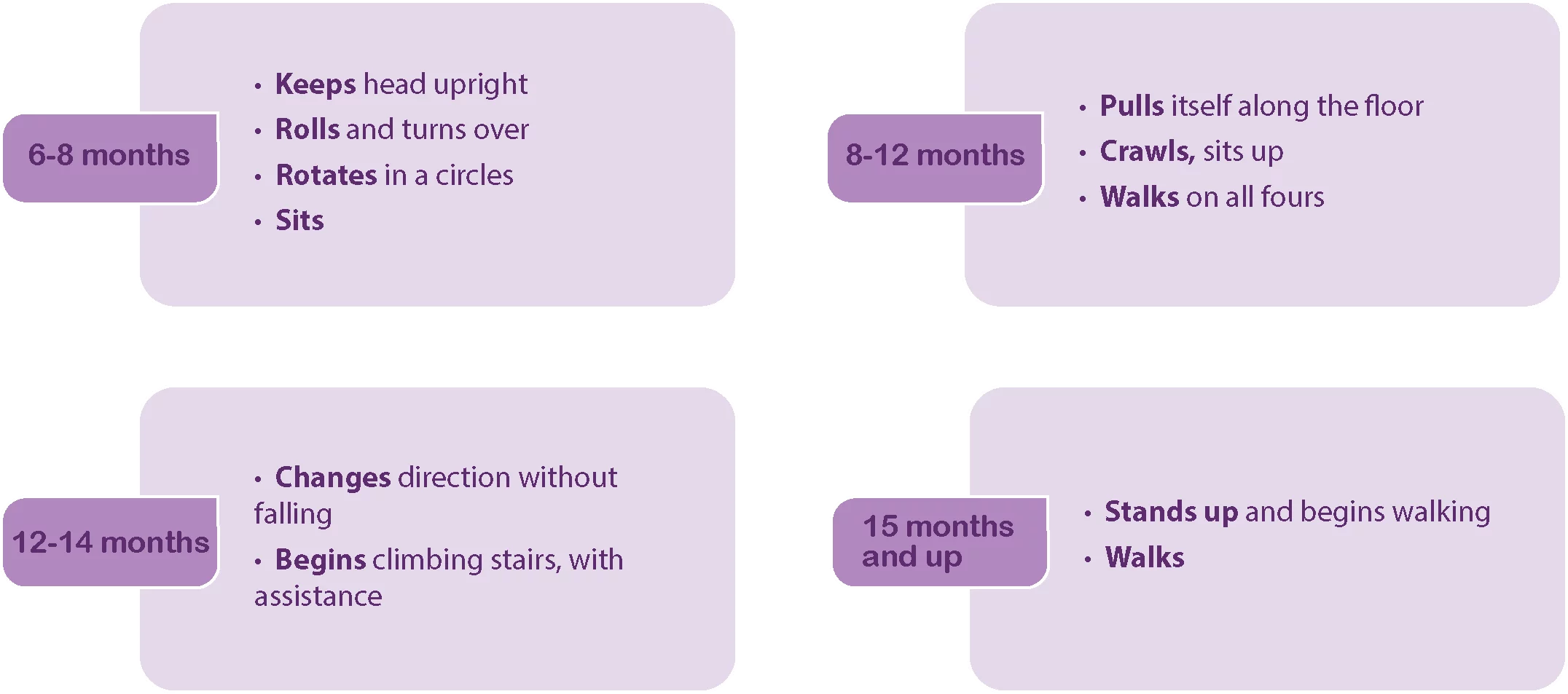Stimulate him
The baby's first birthday is approaching. It's amazing how much the baby has learned, grown and developed, and you continue to be the central pillar of this progress. You are the hand that helps the baby stand up, move forward and gain confidence in his first steps. You are the hand that guides him in this extraordinary adventure.
Games, baby steps and activities...but always protected.
In this stage, your baby will probably take his first steps, and they may be on his toes, with arched legs, or stumbling forward. It is a highly anticipated event that requires patience. Let the baby move ahead at his own pace, without pushing him to go faster than what he can handle. However, you can encourage him to reach new milestones, without fear.
You can also stimulate the baby with fun activities or games he enjoys. The idea is to encourage crawling and to guide the baby as he learns. Ultimately, the baby decides when he is ready to take this big step. Just in case, begin protecting corners, cords, doors and sockets, and be careful with stairs!
Below are a few ideas for games and activities:
- Hold the baby in your arms facing downwards and walk around the dining room at home in this position.
- Hang toys in the baby's crib so he can have fun bumping them with his feet.
- Cheer the baby on as he learns how to crawl over a cushion.
- Place toys just beyond the baby's reach so he learns how to stretch out and turn his body in order to grab them. This will turn into a game for the baby.
- Hold the baby as he pushes himself to stand up and then fold his knees on the way back down.
- Have the baby hold a toy in his hands and then pull the toy upwards to help your child stand up.
- Take a ball and roll him around the baby so he learns the directions of things.
- Let the baby walk barefoot on parquet flooring, carpet or grass since this stimulates the development of muscles, the arch of the foot and toe grip abilities.
Recommendations
- From crawling to standing, with a change in perspective. This may cause your baby to feel joy, excitement and curiosity, or sometimes fear and vertigo. It is normal for your baby to cry in light of these new sensations, or simply because he loses his balance and falls.
- Resist the urge to be overprotective out of a fear of falls. Convey security and confidence to your baby. The best way to do this is to avoid feelings of fear or uncertainty, which hinder learning.
- Monitor changes in your baby's eating habits. He may focus so much on the new goal of walking that he sets aside other things, like food. In this stage, the baby's nutritional needs tend to even out, so he does not need to eat as much.
Phases of crawling

Walking
- Develops muscles (neck, back, legs, etc.) and bones, especially at the joints (knees, ankles, wrists, etc.).
- Expands the field of vision as well as the perception of sizes, distances and the dimensions of things.
- Improves the coordination and stability of movements, especially lateral movements (right, left, etc.). This will have a positive effect later in life when learning to read and write.
- Leaves hands free to touch new things that catch the baby's attention.
- Changes the baby's physical constitution ("they tend to stretch out").
- Increases autonomy and independence (they are able to go places on their own).
- Promotes the baby's socialization process. When babies learn to walk, they have greater interest in interacting with the people that surround them.
Use a baby walker or not?
It is not advisable to use a baby walker because 25% of the children who have used them have fallen or had an accident with them, even in the presence of their parents, due to excessive speed, uneven ground, blows to the head with unprotected objects, or easy access to dangerous areas (such as bathrooms or kitchens). Although baby walkers help babies exercise their legs, control their balance and walk with confidence, it is believed that their use forces an inadvisable posture that interferes with a baby's normal pace for learning how to walk. Please consult your pediatrician for additional information.